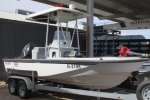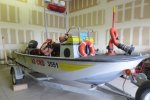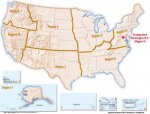I could have sworn that several years ago (many years ago?), I could listen to US Fish and Wildlife units on 164.6250 I think it was from other areas of the state (Colorado River?) here in Phoenix. But if they were linking repeaters back then, they seemed to have stopped the practice for some reason.
I seem to recall once the USFWS patrolling a waterway and coming upon either a brush fire along the shoreline, or a boat fire close to shore. It was too many years ago to recall exactly.
John
Peoria
That is interesting. My Dad's guess is the traffic was coming from a repeater on top of the Kofa Range on the north end of the Kofa National Wildlife Refuge. It's a great place for a repeater, not only for the Kofa NWR, but for the lower Colorado River too. Considering the mild topography between the Kofa Range and Phoenix Daddy and I are not surprised that repeater could be heard in Phoenix. 164.6250 was used at about 70-80% of the refuges at one time. Since the new NTIA band allocation for 1/1/19 I don't know the current frequency. It is really tough to get info for them as interagency frequency guides often don't list the USFWS.
The BLM's Colorado River District and the National Wildlife Refuges on the Colorado River in Arizona are dispatched by the Prescott Interagency Dispatch Center. That center shows two patrol/fire boats as USFWS resources, one assigned to the Imperial National Wildlife Refuge and one assigned to the Bill Williams National Wildlife Refuge. This puts one boat on each side of Parker Dam, so they can be used on the other NWR's along the river. Daddy has a collection of photos on his hard disk and found the picture below. I wonder what the pressure and gpm is of that monitor. The BLM also has two boats assigned on the Colorado River District that look similar.

The USFWS, in the past 5 years or so, has standardized their resource designators so that the first number is the USFWS region. Arizona is in Region 2. I will see if I can post a USFWS regional map.
Oh, before that I have a picture of one of the BLM's boats.

Now the regional map:

I hope this all helps! Oh, only two more days of May. The peak of the fire season in AZ/NM is June. Here is link to a map that will show the existing 1000 hour fuel moisture. These are fuels of 3"-6" diameter. These are the fuels that release the most energy, while also being quite "flashy" (quick to burn). It takes 41.7 days for these fuels to reach equilibrium with the moisture levels around them, so it takes a lot of moisture and time to get these fuels wet. For reference 12%, depending on the wood species, is the moisture level of kiln dried lumber from a mill. So anything below that is very dry fuel.
National 1000 Hour Fuel Moisture as of 5/30/20




